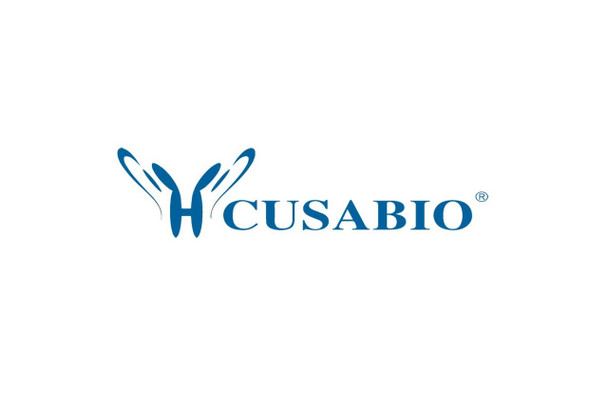Cusabio Human Recombinants
Recombinant Human Tripartite motif-containing protein 72 (TRIM72), partial | CSB-EP744394HU1
- SKU:
- CSB-EP744394HU1
- Availability:
- 3 - 7 Working Days
Description
Recombinant Human Tripartite motif-containing protein 72 (TRIM72), partial | CSB-EP744394HU1 | Cusabio
Alternative Name(s): Mitsugumin-53 (Mg53) (MG53)
Gene Names: TRIM72
Research Areas: Cell Biology
Organism: Homo sapiens (Human)
AA Sequence: SAAPGLLHQELSCPLCLQLFDAPVTAECGHSFCRACLGRVAGEPAADGTVLCPCCQAPTRPQALSTNLQLARLVEGLAQVPQGHCEEHLDPLSIYCEQDRALVCGVCASLGSHRGHRLLPAAEAHARLKTQLPQQKLQLQEACMRKEKSVAVLEHQLVEVEETVRQFRGAVGEQLGKMRVFLAALEGSLDREAERVRGEAGVALRRELGSLNSYLEQLRQMEKVLEEVADKPQTEFLMKYCLVTSRLQKILAESPPPARLDIQLPIISDDFKFQVWRKMFRALMPALEELTFDPSSAHPSLVVSSSGRRVECSEQKAPPAGEDPRQFDKAVAVVAHQQLSEGEHYWEVDVGDKPRWALGVIAAEAPRRGRLHAVPSQGLWLLGLREGKILEAHVEAKEPRALRSPERRPTRIGLYLSFGDGVLSFYDASDADALVPLFAFHERLPRPVYPFFDVCWHDKGKNAQPLLLVGPEGAEA
Source: E.coli
Tag Info: N-terminal GST-tagged
Expression Region: 2-477aa
Sequence Info: Partial
MW: 79.4 kDa
Purity: Greater than 85% as determined by SDS-PAGE.
Relevance: Muscle-specific protein that plays a central role in cell membrane repair by nucleating the assembly of the repair machinery at injury sites. Specifically binds phosphatidylserine. Acts as a sensor of oxidation: upon membrane damage, entry of extracellular oxidative environment results in disulfide bond formation and homooligomerization at the injury site. This oligomerization acts as a nucleation site for recruitment of TRIM72-containing vesicles to the injury site, leading to membrane patch formation. Probably acts upstream of the Ca2+-dependent membrane resealing process. Required for transport of DYSF to sites of cell injury during repair patch formation. Regulates membrane budding and exocytosis. May be involved in the regulation of the mobility of KCNB1-containing endocytic vesicles
Reference: "S-nitrosylation of TRIM72 at cysteine 144 is critical for protection against oxidation-induced protein degradation and cell death." Kohr M.J., Evangelista A.M., Ferlito M., Steenbergen C., Murphy E. J. Mol. Cell. Cardiol. 69:67-74(2014)
Storage: The shelf life is related to many factors, storage state, buffer ingredients, storage temperature and the stability of the protein itself. Generally, the shelf life of liquid form is 6 months at -20?/-80?. The shelf life of lyophilized form is 12 months at -20?/-80?.
Notes: Repeated freezing and thawing is not recommended. Store working aliquots at 4? for up to one week.
Function:
Involvement in disease:
Subcellular Location:
Protein Families:
Tissue Specificity:
Paythway:
Form: Liquid or Lyophilized powder
Buffer: If the delivery form is liquid, the default storage buffer is Tris/PBS-based buffer, 5%-50% glycerol. If the delivery form is lyophilized powder, the buffer before lyophilization is Tris/PBS-based buffer, 6% Trehalose, pH 8.0.
Reconstitution: We recommend that this vial be briefly centrifuged prior to opening to bring the contents to the bottom. Please reconstitute protein in deionized sterile water to a concentration of 0.1-1.0 mg/mL.We recommend to add 5-50% of glycerol (final concentration) and aliquot for long-term storage at -20?/-80?. Our default final concentration of glycerol is 50%. Customers could use it as reference.
Uniprot ID: Q6ZMU5
HGNC Database Link: N/A
UniGene Database Link: N/A
KEGG Database Link: N/A
STRING Database Link: N/A
OMIM Database Link: N/A






